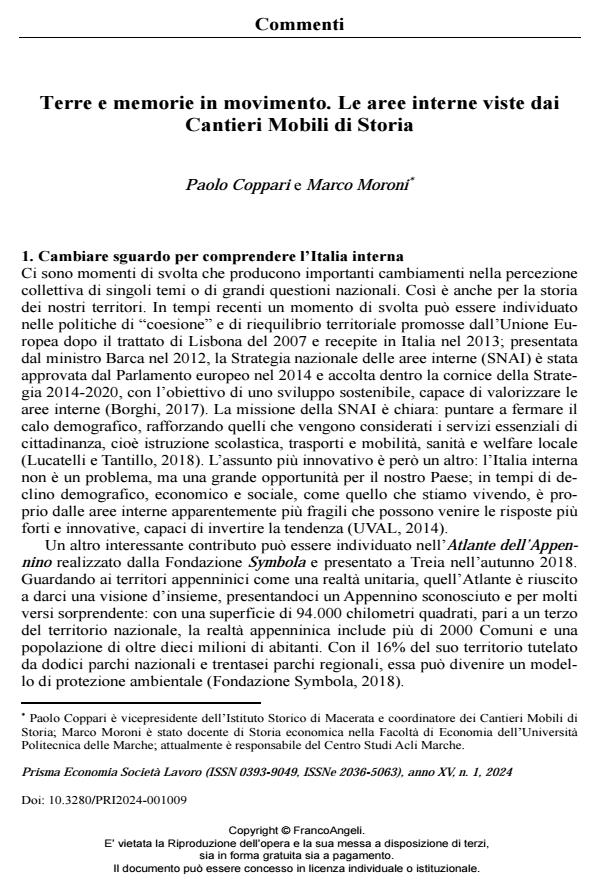Terre e memorie in movimento. Le aree interne viste dai Cantieri Mobili di Storia
Journal title PRISMA Economia - Società - Lavoro
Author/s Paolo Coppari, Marco Moroni
Publishing Year 2024 Issue 2024/1
Language Italian Pages 13 P. 129-141 File size 207 KB
DOI 10.3280/PRI2024-001009
DOI is like a bar code for intellectual property: to have more infomation
click here
Below, you can see the article first page
If you want to buy this article in PDF format, you can do it, following the instructions to buy download credits

FrancoAngeli is member of Publishers International Linking Association, Inc (PILA), a not-for-profit association which run the CrossRef service enabling links to and from online scholarly content.
The article analyzes the effectiveness of ‘Work experience’ a training inclusion internship project, which has been implemented in Jesi (An) since 2009 with people suffering from mental health problems and managed by the Mental Health Department of Jesi. After an initial global overview of how mental health is financed and what the trends of mental disorders are and the impact they have on social, professional and economic life, the article continues with a focus on the importance of work and how it is closely interconnected with mental health, both for those suffering from mental disorders and for other individuals. The paper continues with a brief historical excursus on the various attempts that were made in Italy before 1978, the year of approval of law 180, which decreed the closure of mental hospitals and a new way of working in the field of mental health, to promote the work inclusion of psychiatric patients and then getting into the heart of the social inclusion internships. The essay therefore concludes with the demonstration of the effectiveness of the ‘Work experience’ project, which in economic terms contributed to reducing healthcare spending, because it has had an important impact in reducing hospitalizations in the psychiatric ward of the Jesi hospital, compared to before this project began.
Keywords: mental health, work, social inclusion internships, healthcare spending, sheltered employment.
Paolo Coppari, Marco Moroni, Terre e memorie in movimento. Le aree interne viste dai Cantieri Mobili di Storia in "PRISMA Economia - Società - Lavoro" 1/2024, pp 129-141, DOI: 10.3280/PRI2024-001009